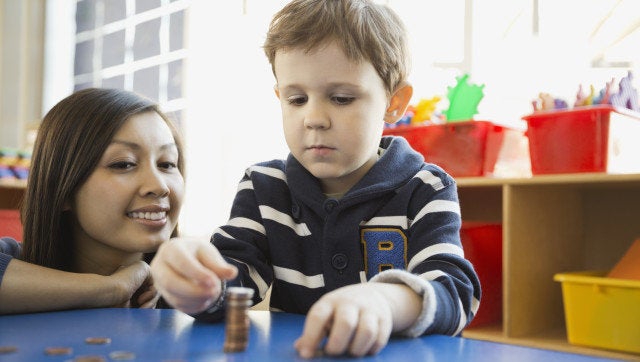
Number sense is one of the most difficult concepts to teach young children. Why? Because it's abstract.
For children to grasp number sense, they need to understand that an abstract symbol (the number 3 or 8, for example) means an amount or quantity that could apply to anything. They need to learn that the number 7 can stand for the girls in the room, cups in a box, blocks on a table, pieces of a puzzle or how many scrapes they have on their leg. And they need to learn that a 6 stands for fewer things than a 9, even though there's no way to understand that just by looking at the numbers themselves.
But once children develop number sense, wow! -- their math abilities can really take off!
Young learners love knowing that numbers can represent everything from a single, little pebble in the palm of their hand to the billions of grains of sand on a beach. For curious children and those who truly understand what numbers and their symbols represent, numbers are like magic!
To teach number sense to your young child, begin with the numbers 1 to 10 because we use a base 10 system, and these are the numbers that young learners are most familiar with. Try to give your child as many oral -- and visual -- counting experiences as possible during his or her first five years.
Here are some of the many simple activities that can help your child to develop number sense:
- Count out loud with your child whenever possible, so he or she hears numbers frequently and learns to associate them with objects in the world. For example, you might say, "How many toes are on your foot? One, two, three, four, five. Five toes!" or "How many socks are in your drawer? Let's count them!"
- Help your child learn that the quantities you are counting can be written down with a symbol, called a number. You might say, "Now that you can count to 10, let me show you how you can write the numbers that you count!"
1 2 3 4 5 6 7 8 9 10
- Talk about numbers--what they mean to you and how you use them. Explain how you use them to measure ingredients in a recipe or how tall he or she is; to count your money; to tell time; to pay your bills; to use the numbers on a telephone, a TV remote, and a computer keyboard; as well as to identify your street address.
Read many books about numbers and number sense. Some exciting and interesting ones your child should enjoy are:
- The Icky Bug Counting Book by Jerry Pallotta
- 10 Little Rubber Ducks by Eric Carle
- Centipede's One Hundred Shoes by Tony Ross
- Fall Is Here! Counting 1-10 by Pamela Jane
- Five Little Monkeys Jumping on the Bed by Eileen Christelow
- Five Little Monkeys Sitting in a Tree by Eileen Christelow
Numbers are sometimes intimidating to children. But by introducing math concepts early and showing how numbers are part of your world, you'll help your child to develop number sense early, and you're helping him or her to enjoy math more because your youngster is learning it with you!
Rebecca A. Palacios, Ph.D., is a Senior Curriculum Advisor for Age of Learning, Inc., the company that operates ABCmouse.com.